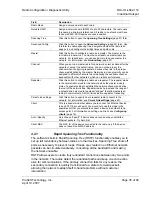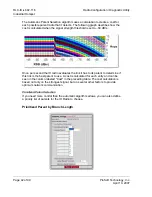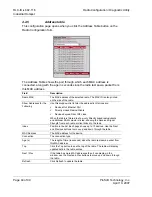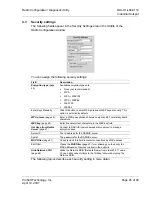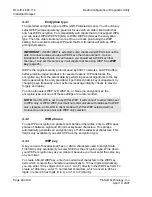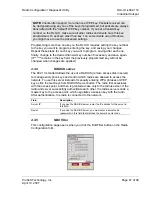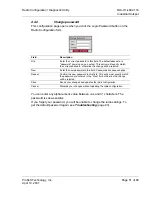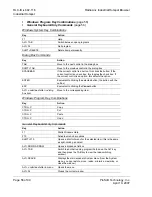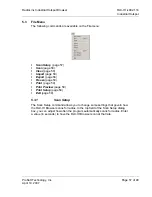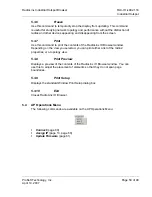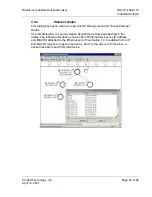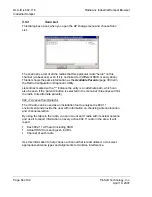
Radio Configuration / Diagnostic Utility
RLX-IH
♦
802.11b
Industrial Hotspot
ProSoft Technology, Inc.
Page 49 of 99
April 10, 2007
you can configure the radio and view its diagnostic settings. Otherwise, the
address is unnecessary.
Field Description
Obtain IP address -
DHCP
Select this option to allow the radio to obtain its IP address from a
DHCP server.
Use the following IP
address
Select this option to specify a Static IP address to the radio. Enter the
IP address information in the following fields.
IP Address
Enter an IP address that will not interfere with any other devices on
the network. Request a block of IP addresses you can use from your
Network Administrator.
Subnet Mask
Enter the Subnet Mask provided by your Network Administrator.
Default Gateway
Enter the Default Gateway address provided by your Network
Administrator.
SNMP button
Click this button to open the SNMP (Simple Network Management
Protocol) Agent settings form. Use this form to configure access to
radio network settings through an SNMP agent.
Login Password button
Click this button to change the Login Password for the radio. The
default password is "password". You should change this password,
and keep a record of it in a safe place, to protect the radio from being
reconfigured by unauthorized users.
DHCP (Dynamic Host Control Protocol) is a service provided by a server
(typically a router or a firewall) on a local area network. Devices on a network
that supports DHCP can request and receive an IP address from the DHCP
server. RLX-IH radios support DHCP; by default, they attempt to obtain an IP
address from a DHCP server.
If a DHCP server is not available, the radio will not be able to acquire an IP
address automatically, therefore you must assign an IP address, subnet mask
and default gateway to the radio so that it can communicate on the network.
You can also assign a Static (fixed or permanent) IP address to the radio to
make it easier to identify and configure the radio. Static IP addresses are
particularly useful when configuring radios to serve as Access Points, or for
radios that must be accessible through a firewall.
A detailed discussion of TCP/IP networking is beyond the scope of this manual.
Refer to the following Microsoft knowledgebase article for more information:
http://support.microsoft.com/kb/164015

